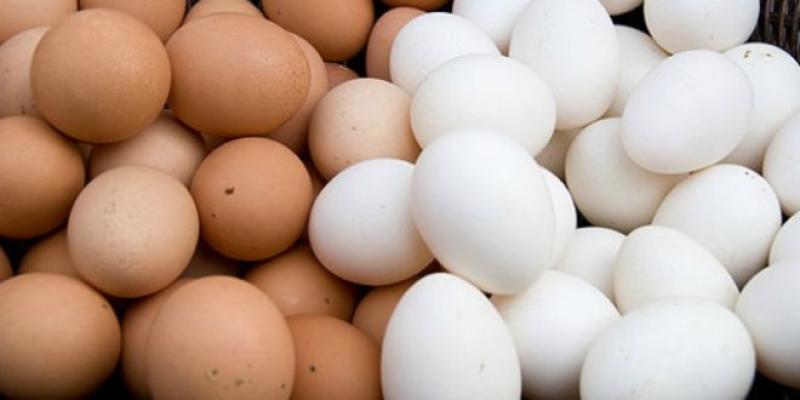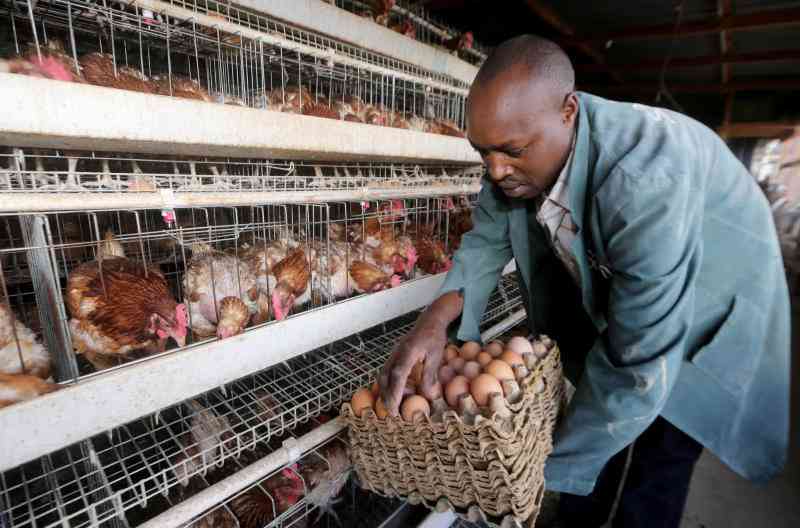Greetings daktari,
My birds are laying white and misshapen eggs, and my clients are complaining.
Eunice from Kisumu...

Dear Eunice,
If you had such a problem and were in Europe, nobody would have complained about the white colour. In East and Central Africa, most consumers prefer brown table eggs, and so the common breeds are doing exactly that... producing brown egg shells. To quickly know the colour of eggs your hen will lay, look at the colour of its earlobes. A white earlobe hen will produce a white shelled egg.
So, when I received your concern of white egg shell and malformed at the same time my first instinct was of a most probable infection by the most prevalent disease of chicken - Infectious Bronchitis (IB). It was first detected in North Dakota in USA in 1931.
I expect your egg production to drop as well with time and if there is no complicating factor, this disease can resolve in 10-12 days with no treatment.
What is Infectious Bronchitis
IB infection only affects chickens of all ages and is common during the cold periods since high temperatures kill the virus within three days of exposure. The virus can also be quickly killed by the most common disinfectants used on the farm.
The virus first enters the body of the chickens through open beaks or nose, attacks the trachea, lungs and air sacs, gets into the blood stream and attacks kidneys, genital tracts, intestines and ovaries. It spreads fast within the population and within three days of introduction, 100 per cent of the birds will have been exposed.
Signs of illness
Once infected, the first sign is loss of appetite, birds fail to finish their feed allocations that they were comfortably consuming the last two days. They sneeze, gasp for air, discharge from the nasal cavity, heads swell, litter become more wet due to damaged kidneys. You can lose up to 25 per cent birds in severe cases. If these were broilers, there would be increased carcass condemnation and poor meat on bone formation.
The remedy
In layers, there will be reduced feed intake, poor egg shell quality with some eggs being deformed, shell-less, change colour to white, wrinkled, some with calcium deposits and easily cracks. Farmers will lose due to low supply of quality eggs into the market.
Stay informed. Subscribe to our newsletter
If such eggs get in the kitchen, they will be easily noticed as you crack on the dish, the albumin will appear watery unlike the jelly type seen in good quality eggs. The affected hens develop cysts in the ovary and assumes a penguin posture, will not produce eggs and will eventually die. The right thing to do is to consult your local veterinarian to assess the situation and advise on whether to put the birds on specific broad-spectrum antibiotic to deal with any secondary infections or isolate the flocks to avoid spread of infections to other neighbouring flocks.
If the vet decides to open the dead birds for autopsy, the most likely things to see are white plugs in the trachea, congested lungs, air sacculitis and severely damaged kidney tissues. I wouldn’t be surprised if a large fluid filled cyst is noticed in the abdominal cavity.
These signs and symptoms can easily be acceptable in a field case as a confirmation of IB infection. In sub-clinal cases where the only sign is of respiratory nature with sudden drop in egg production that recovers but fails to resume the previous trends is difficult to diagnose unless samples are taken to the laboratory.
Blood samples can be used to detect antibody levels against IB infections while oropharyngeal swabs (from the buccal cavity) can be sent to research laboratories or university labs for specific isolation and identification of the IB virus using PCR machine.
The good news is that there are vaccines in the market that if used correctly then there is no cause for alarm. All day-old chicks should be vaccinated at the hatchery or on arrival at the farm using a live vaccine through eye drop or spray. Most of these IB vaccines are now days combined with Newcastle (NC) vaccine.
A second booster live vaccine (IB+NCD) is recommended at 12-14 days of age for all birds, while these vaccinations are adequate for broilers, for layers or improved kienyeji, a third live booster is recommended at 4-5 week.
A final killed vaccine can be given at 6-8 weeks to protect the birds for life. This is important as it will prevent production of low-quality eggs and ensures that even in the presence of infection, farmers will continue to supply good quality eggs into the market.
The writer is Head Vet at Kenchic [email protected] or [email protected]
 The Standard Group Plc is a
multi-media organization with investments in media platforms spanning newspaper
print operations, television, radio broadcasting, digital and online services. The
Standard Group is recognized as a leading multi-media house in Kenya with a key
influence in matters of national and international interest.
The Standard Group Plc is a
multi-media organization with investments in media platforms spanning newspaper
print operations, television, radio broadcasting, digital and online services. The
Standard Group is recognized as a leading multi-media house in Kenya with a key
influence in matters of national and international interest.
 The Standard Group Plc is a
multi-media organization with investments in media platforms spanning newspaper
print operations, television, radio broadcasting, digital and online services. The
Standard Group is recognized as a leading multi-media house in Kenya with a key
influence in matters of national and international interest.
The Standard Group Plc is a
multi-media organization with investments in media platforms spanning newspaper
print operations, television, radio broadcasting, digital and online services. The
Standard Group is recognized as a leading multi-media house in Kenya with a key
influence in matters of national and international interest.










